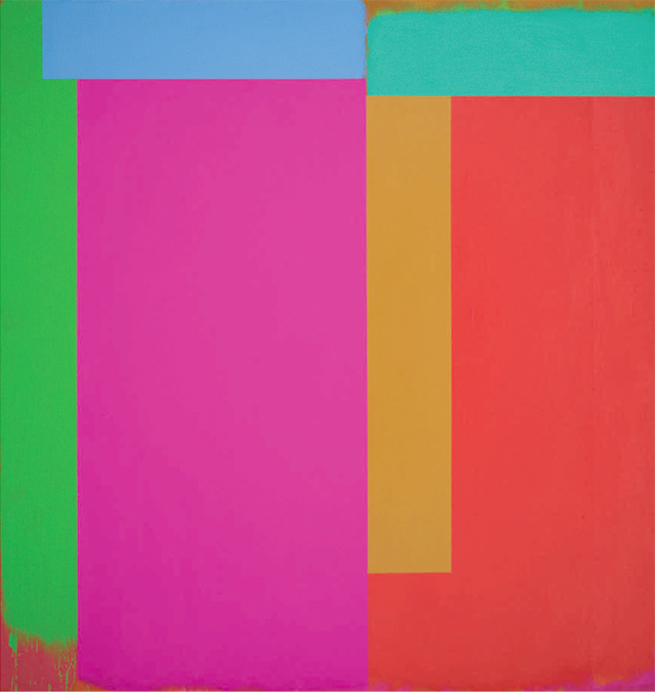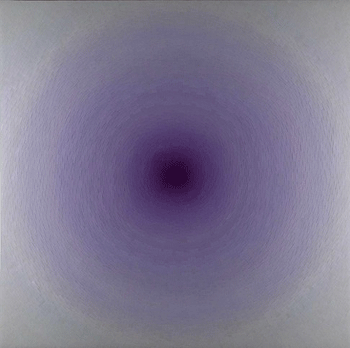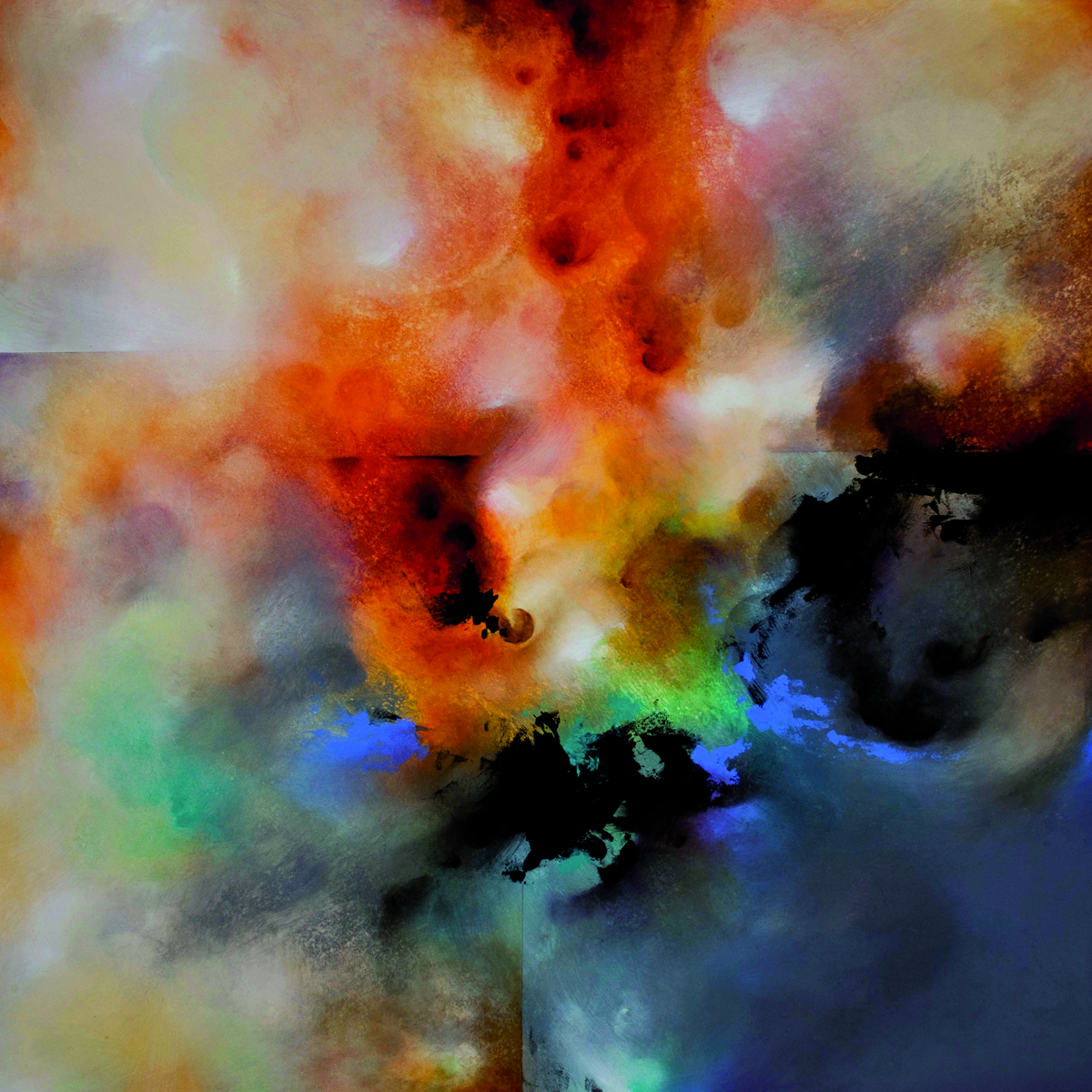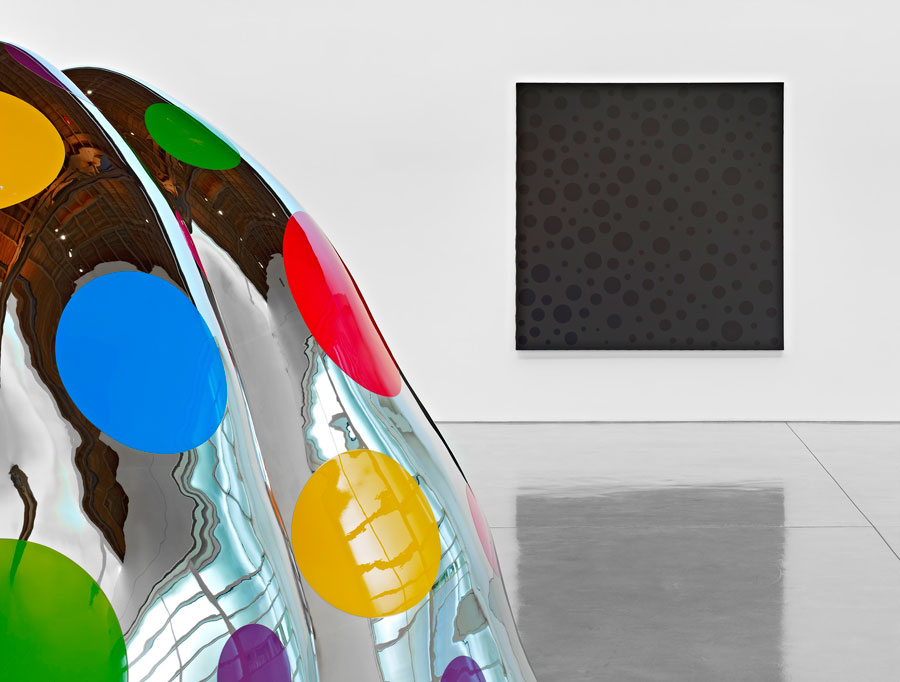
Doug Ohlson: Works from the 1980s | A native of Cherokee, Iowa, Doug Ohlson (1936 - 2010) exchanged the effortless horizons of the Midwest for the bare-knuckles bright lights of New York City in 1961. Though the city proved to be the ideal springboard for his artwork, something of the artist's Midwestern sensibility remains.
Ohlson's large-scale canvasses, fields of opulent color, are sculpted as resolutely as landscape itself. The sun seems to radiate from inside a wall of fuchsia (Marker California) until a vertical panel of tawny yellow blocks the light. In each and every canvas, no matter the scale, the artist offers startling re-examinations of shadow and luminescence, breathtaking views of wide-open spaces reconstituted by hard-edged geometry.

Material Manifestation | The innovative works of five L.A. based -- artists who speak with a diverse range of talents across various media -- Lisa Bartleson, Jed Berk, Joe Davidson, Roni Feldman and Lindsay Scoggins. The culminating exhibition reflects each artist's unique ideas with unconventional media and their captive voices in social and political commentaries, nature, pop culture, etc. Each artwork conveys the visual and auditory modalities in obsessive/compulsive ways expressed through the use of scotch tape, plastic strips, air-spray, video, etc.
For example, Lisa Bartleson (work pictured above) melds colors, lights & textures on a two-dimensional surface and creates an infinite and subliminal sphere that transports the viewer to a meditative state as if Bartleson's own "energy" was being transferred and received.

Jin Ho Song: A Celestial Space | The exhibition commemorates the late Korean American artist Jin Ho Song, and publicly examines for the first time the work of an artist who viewed painting as a journey to the divine.
Song, a reclusive artist, was engaged with making visible the ephemeral, and stylistically explored many influences ranging from impressionist to expressionist paint applications. This debut exhibition showcases a selected range of his work, from somber and cryptic large-scale pieces with oil paint mixed with tar, to others characterized by furious brushwork and vibrantly pigmented colors. Intensely private but clearly driven, the mystery surrounding the artist's personality and life also lends an air of mystery to his most trademark works, from which shadowy figures emerge and withdraw from beautifully rendered horizons of dreamily blurred color. Clearly, the more you look, the more they disappear.

Cody Hooper: Subtle Balance | After many years of painting in watercolors, Hooper moved forward, experimenting with abstracts in various mediums. This pushed him to expand his horizons and tap into new areas of painting he had not yet explored. There was an obvious freedom and personal expression with abstraction and it was then that he really began to flourish. He was deeply interested in the effects of color, texture and the emotional response to strong composition and design. By removing the representational and creating something that told a story without an observational subject matter was very exciting.
Though his work shows a bold mix of styles, ranging from sleek and contemporary to weathered and organic, he brings a subtle and sophisticated feel to his paintings through a unique balance of color, composition and texture.

Yayoi Kusama: New Sculptures and Recent Paintings | Born in Matsumoto City, Japan in 1929, Yayoi Kusama studied Nihonga painting, a rigorous formal style developed during the Meiji period (1868-1912) to deflect the wholesale influence of Western art through the revitalization of the traditions of Japanese painting and their synthesis with aspects of Western art. Attracted by the experimental promise of the postwar international art scene, Kusama moved to New York City in 1958.
Kusama produced her first astonishing Net paintings in 1959 -- vast canvases measuring up to 33 feet in width, entirely covered in rhythmic undulations of small, thickly painted loops. The inherent philosophical paradox of these paintings -- that "infinity" could be quantified and constrained within the arbitrary structure of a ready-made canvas -- combined with the more subjective and obsessional implications of their process, distinguish these works from Minimalist abstraction, which would dominate the New York art scene several years later.
Following the success of her project for the Japanese Pavilion at the Venice Biennale in 1993 -- a dazzling mirror room filled with pumpkin sculptures, like an artful pumpkin patch over which she presided in magician's garb -- Kusama went on to produce a huge, vivid yellow pumpkin covered with an optical pattern of black spots as an outdoor sculpture. The pumpkin, like the infinity net, became a kind of alter ego for her.
For the most current and comprehensive calendar of art events in Los Angeles go to Artweek.LA.